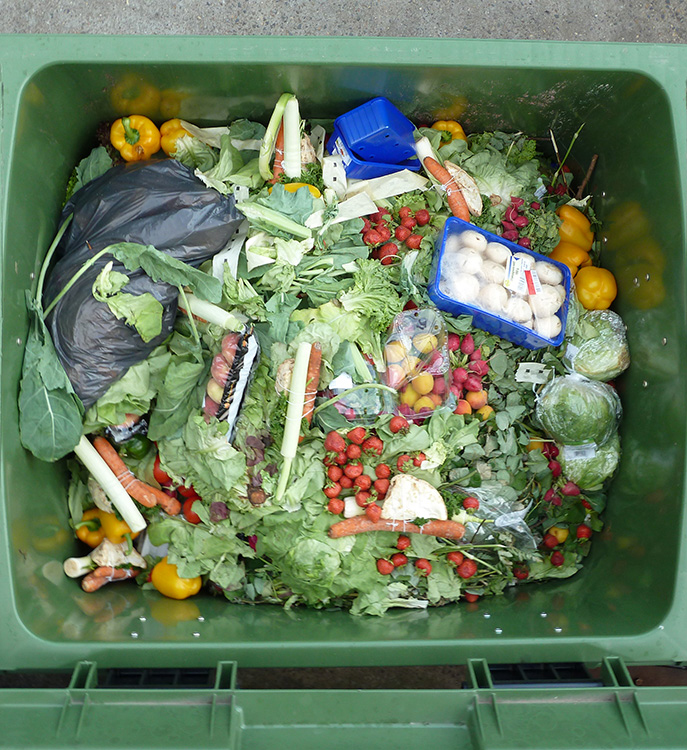On this website, some posts contain affiliate links, which means that if you buy a product using my link, I may earn a commission.
Sustainable kitchen tips include reducing food waste and opting for eco-friendly cooking materials. In today’s world, where environmental concern has become increasingly important, sustainable practices in the kitchen are more crucial than ever.
By adopting simple changes and mindful choices, you can contribute to a greener lifestyle while still enjoying delicious meals. This article will provide valuable tips on how to make your kitchen more sustainable, helping you reduce waste, minimize energy consumption, and make eco-friendly choices when it comes to cooking utensils and appliances.
From properly storing food to creatively using leftovers and opting for natural cleaning products, these tips will not only benefit the planet but also promote a healthier, more sustainable way of living in your kitchen.


Credit: umaine.edu
1. Plan Your Meals Mindfully
1. Plan Your Meals Mindfully
Opt for seasonal and locally sourced ingredients: Choosing locally sourced ingredients ensures that your food travels a shorter distance from farm to table, reducing carbon emissions. Additionally, seasonal produce tends to be fresher and packed with more nutrients.
Reduce food waste by planning meals in advance: Take stock of what you already have in your pantry and fridge before heading to the grocery store. Plan meals around ingredients that need to be used up to minimize waste. Be creative and try repurposing leftovers into new dishes.
Embrace vegetarian or plant-based meals at least once a week: Animal agriculture is a significant contributor to greenhouse gas emissions. By incorporating meatless meals into your routine, you can reduce your carbon footprint, conserve water, and promote a more sustainable food system.
2. Adopt Sustainable Cooking Techniques
To create a sustainable kitchen, there are several cooking techniques you can adopt. Utilizing energy-efficient appliances and cookware is one way to make a positive impact. Look for appliances that have high energy efficiency ratings, such as those with the Energy Star label. This will help reduce your overall energy consumption.
Another strategy is to opt for cooking methods that minimize water consumption. For example, steaming vegetables instead of boiling them can significantly reduce water usage. Additionally, using a pressure cooker can cut down on cooking time and lower water consumption.
Lastly, using residual heat to finish cooking whenever possible is a great way to save energy. Turn off the stove or oven a few minutes before the dish is fully cooked and let the residual heat do the rest. This technique not only saves energy but also ensures that you don’t overcook your food.
By adopting these sustainable cooking techniques in your kitchen, you can contribute to a greener and more environmentally friendly lifestyle.
3. Make Sustainable Ingredient Choices
When it comes to creating a sustainable kitchen, one of the key aspects to consider is choosing organic and pesticide-free produce. By opting for organic fruits and vegetables, you are not only minimizing your exposure to harmful chemicals, but also supporting environmentally friendly farming practices. Look for labels such as USDA Organic or the Non-GMO Project Verified to ensure that the produce you buy is free from synthetic pesticides and genetically modified organisms.
Another crucial aspect of sustainable ingredient choices is selecting sustainable seafood options. Overfishing and destructive fishing methods can have a devastating impact on marine ecosystems. Look for labels such as the Marine Stewardship Council (MSC) certification, which guarantees that the seafood you purchase is sustainably sourced and caught using methods that minimize damage to the ocean.
Additionally, incorporating more whole foods into your recipes and reducing processed ingredients is a great way to make your kitchen more sustainable. Whole foods, such as fruits, vegetables, whole grains, and legumes, not only provide essential nutrients but also generally have a lower carbon footprint compared to heavily processed and packaged foods. You can also consider buying in bulk to reduce packaging waste and choosing local and seasonal ingredients to support local farmers and reduce transportation emissions.
A. Embrace Food Preservation Techniques
Utilize canning, pickling, and fermentation methods to make the most of your produce. Canning allows you to store fruits, vegetables, and sauces in glass jars for a longer time. Pickling not only preserves vegetables but also adds a tangy flavor to them. Experiment with pickled cucumbers, carrots, and even onions. Fermentation is another method to consider as it not only extends the shelf life of fresh produce but also enhances their nutritional value.
Freeze Leftover Ingredients or Cooked Meals for Future Use
To minimize food waste, consider freezing leftover ingredients or cooked meals. Simply place them in air-tight containers or freezer bags to prevent freezer burn. Label them with the date and contents for easy identification. Later, when you’re short on time or ingredients, you can simply defrost and use them in your recipes.
Use Air-Tight Containers to Store Food and Extend Its Shelf Life
Invest in high-quality air-tight containers to store dry food items like grains, cereals, and snacks. These containers help keep your food fresh, prevent spoilage, and reduce the need for single-use packaging. Additionally, they help you organize your pantry and reduce clutter.
B. Grow Your Own Herbs And Vegetables
Growing your own herbs and vegetables is a great way to turn your kitchen into a sustainable space. You can establish a small kitchen garden or create an herb window sill to easily access fresh ingredients for your cooking needs. Using organic soil and compost is important as it promotes healthier plant growth and minimizes the use of synthetic chemicals.
By growing your own herbs and vegetables, you can enjoy the benefits of freshly picked ingredients while reducing packaging waste. This means less plastic containers and fewer trips to the grocery store, which ultimately reduces your carbon footprint.
C. Discover Alternative Ingredients
Swap single-use plastic with eco-friendly alternatives: In order to make your kitchen more sustainable, consider replacing single-use plastic items with eco-friendly alternatives. For example, switch to reusable silicone food storage bags instead of disposable plastic bags, use stainless steel or glass water bottles instead of plastic bottles, and choose reusable beeswax wraps or reusable silicone lids instead of plastic wrap. These small changes can significantly reduce plastic waste and help protect the environment.
Experiment with ancient grains and more sustainable food options: Another way to create a sustainable kitchen is by exploring alternative ingredients such as ancient grains and more sustainable food options. Consider incorporating ingredients like quinoa, amaranth, and farro into your recipes as they are not only nutritious but also have a lower environmental impact compared to some traditional grains. Additionally, try to include more plant-based meat substitutes in your meals. There are a variety of options available such as tofu, tempeh, seitan, and plant-based burgers that can be delicious alternatives to meat.
Frequently Asked Questions On Sustainable Kitchen Tips
What Are Some Eco-friendly Alternatives To Plastic Wrap?
Some eco-friendly alternatives to plastic wrap include beeswax wraps, silicone food covers, and reusable food storage bags. These options are not only better for the environment but also help to reduce waste in the kitchen.
How Can I Reduce Food Waste In My Kitchen?
You can reduce food waste in your kitchen by planning meals ahead, storing leftovers properly, and composting food scraps. Additionally, buying only what you need, freezing perishable items, and repurposing ingredients can also help minimize food waste.
What Are Some Easy Ways To Save Energy In The Kitchen?
To save energy in the kitchen, you can use energy-efficient appliances, cook with lids on pots and pans, and opt for smaller appliances when possible. Additionally, using the appropriate size burner or element, and turning off appliances when not in use can help conserve energy.
Conclusion
To create a sustainable kitchen, start by making small changes to reduce your environmental impact. Implementing composting, reducing single-use plastics, and choosing locally sourced ingredients are all great steps towards a greener lifestyle. By being conscious of your food waste and energy consumption, you can contribute to a healthier planet.
Embrace these sustainable kitchen tips and make a positive difference today!
On this website, some posts contain affiliate links, which means that if you buy a product using my link, I may earn a commission.

